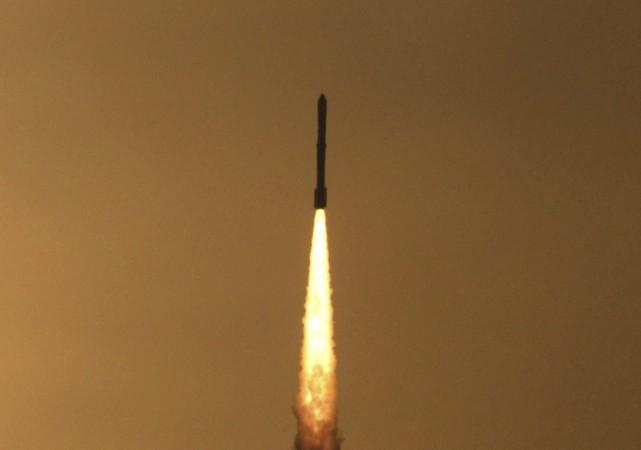
India successfully put into orbit five British satellites with its Polar Satellite Launch Vehicle's XL variant (PSLV-XL) on Friday night in copy book style.
This was the first commercial mission for ISRO in 2015. Exactly at 9.58 p.m., the PSLV-XL rocket, standing 44.4 metres tall and weighing around 320 tonnes, with a one way ticket tore into the night skies with fierce orange flames at its tail.
The expendable rocket carrying five British satellites cumulatively weighing around 1,440 kg as its luggage slung them into their intended orbit just over 19 minutes into its flight.
A.S. Kiran Kumar, ISRO Chairman, said: "An entirely successful launch for a customer. This time a set of new tool was developed. Five satellites were put into orbit for a customer."
It was the heaviest commercial mission for the PSLV rocket till date though its total carrying capacity for such a mission is around 1,750 kg. The rocket blasted off from the first launch pad at the Satish Dhawan Space Centre here, about 80 km from Chennai.
For the onlookers, the rocket looked like an inverted flare/torch as it lit up the night sky amidst the cheers of the ISRO officials and the media team assembled at the rocket port here.
At the rocket mission control room, Indian space scientists at ISRO were glued to their computer screens watching the rocket escaping the earth's gravitational pull.
Of the five British satellites, three are identical DMC3 optical earth observation satellites weighing 447 kg.
Of the other two satellites, CBNT-1 weighs 91 kg and also is an optical earth observation technology demonstration microsatellite, while the De-OrbitSail weighs 7 kg. This is an experimental nano satellite for demonstration of large thin membrane sail and drag deorbiting.
Just over 17 minutes into the flight, the rocket started ejecting the DMC3 satellites one after another and they were followed by De-OrbitSail and CNBT-1 satellites.
The whole mission was completed just over 19 minutes into the flight as planned.
Immediately on the successfully ejection, scientists at the missioncontrol centre were visibly relieved and started clapping happily.
The three DMC3 and the CBNT-1 satellites are built by Surrey Satellite Technology Ltd. The De-OrbitSail is built by Surrey Space Centre.
According to ISRO, the DMC3 constellation, comprising of three advanced mini-satellites DMC3-1, DMC3-2 and DMC3-3, is designed to address the need for simultaneous high spatial resolution and high temporal resolution optical earth observation.
Launched into a single low earth orbit plane and phased with a separation of 120 degrees between them, these satellites can image any target on the earth's surface every day.
Major application areas include surveying the resources on earth and its environment, managing urban infrastructure and monitoring of disasters.
According to ISRO, accommodating the three DMC3 satellites each with a height of about three metres within the existing payload fairing or the heat shield of the PSLV was a challenge.
Thus, a circular L-adaptor and a triangular Multiple Satellite Adapter-Version 2 (MSA-V2) were newly designed and realised by ISRO for this specific purpose.
France's SPOT 7 satellite weighing 714 kg was the heaviest single foreign satellite carried by a PSLV rocket till now. It was launched on June 30, 2014.
Meanwhile, ISRO is also readying for the launch of GSAT6 communication satellite using its heavier rocket Geosynchronous Satellite Launch Vehicle (GSLV).
The GSLV rocket's first stage/engine has been assembled and the activities relating to that rocket assembly are progressing smoothly.
Only after the GSLV rocket launch the testing of a small model of reusable launch vehicle shaped like an aeroplane would be done, an ISRO official told IANS earlier.
Earlier, it was said the test reusable launch vehicle would happen in July.

















